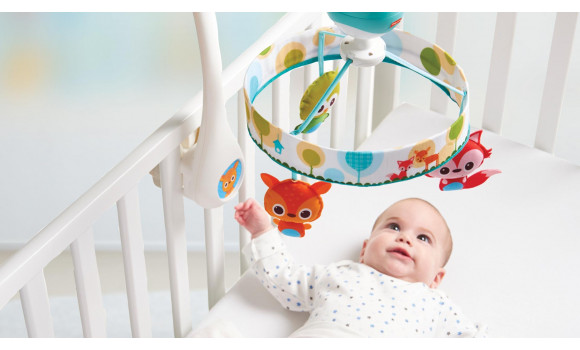By Mildred Cawlfield (adapted)
Today, a three-week-old infant accompanied her brother to the Acorn Toy Library and selected her toys. Really!
At first, her mother and I thought we’d let her brother take three toys and just give her one, rather than two for each, so we showed her mobile which has animals that face the baby rather than, as so many do, face the adult. It was obvious that she like it. Her random movements stopped as she focused intently on the slowly moving shapes and music box sound.
After her brother had worked for some time with two toys, she was lying on the changing table and showing us how she could turn her head clear over from one side to the other to keep a rattle I was shaking in view. I was telling her mother how to place pictures for her to look at, at her side, and brought and brought out some samples of pictures with high contract images. She showed such obvious enjoyment looking at the pictures, staring intently, and excitedly kicking her feet, so we sent the pictures home with the family.
Regularly, babies will look away from toys they have had and show great interest in the new ones. The babies do indeed make their own selections as they discover their capabilities. They will give no more than a cursory glance at certain toys and spend considerable time systematically exploring others.
Recent research reveals infants’ capabilities to learn has involved observing choices they make. If given the choice, they will look at bright colors, rather than dull ones; intricate patterns, rather than plain colors; and they definitely show a preference for the human face over other pictures.
Rather than looking at infants as passive recipients of care, we should regard them as intelligent thinkers capable of making some decisions of their own.

